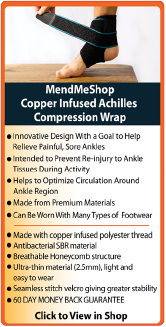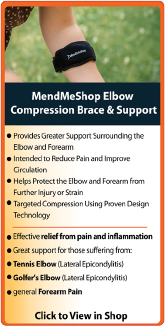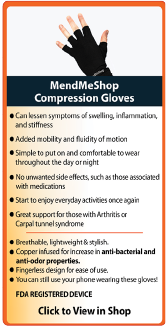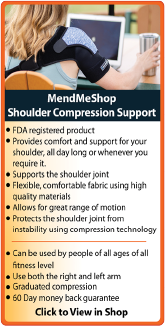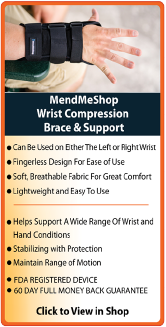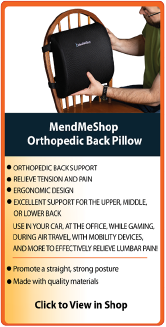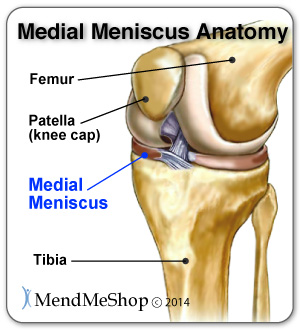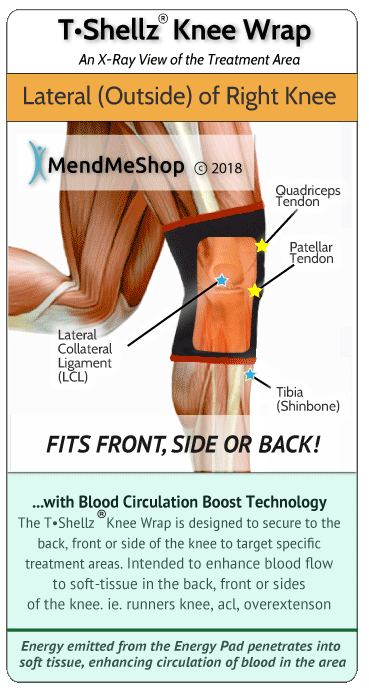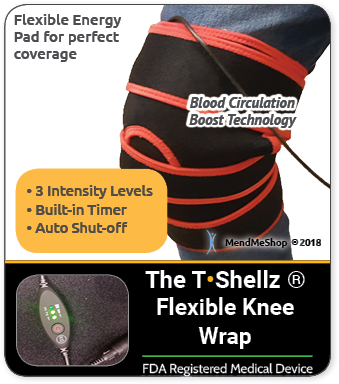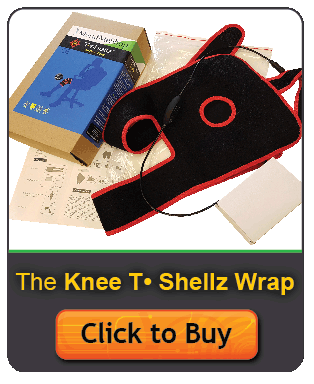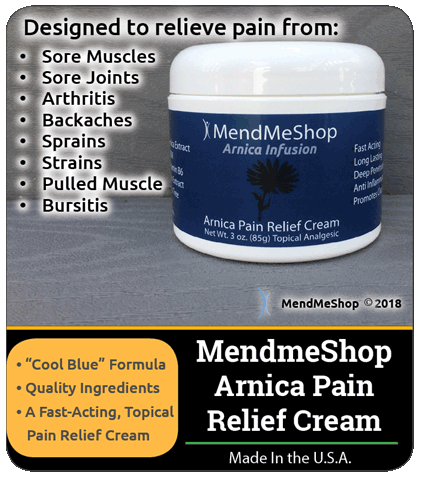|
|
An Overview of Medial Meniscus TearsWhat is the Medial Meniscus? The menisci are attached in the middle of the joint by ligaments. They're also surrounded by ligaments on the outside and inside of the joint (the anterior cruciate ligament - ACL, posterior cruciate ligament - PCL, medial collateral ligament - MCL, lateral collateral ligament - LCL). The entire knee is then surrounded by leg muscles and tendons to hold the whole structure in place. The medial meniscus is held in place at three points. One point (at the anterior horn location) attaches at the front to the tibia via the anterior cruciate ligament (ACL) on the intercondylar area. The second point (at the posterior horn location) attaches to the intercondylar area of the tibial plateau. The third and final attachment point is where the medial meniscus meets the medial collateral ligament (MCL). The MCL anchors the medial meniscus so it doesn't move as freely in the knee joint space as the lateral meniscus. The knee is obviously a very complicated joint with a lot of different tissue structures in place, this is why more than one injury can happen at a time along with your medial meniscus pain. You are more likely to suffer from a medial meniscus tear than a lateral meniscus tear. One reason for this is that the medial meniscus is more firmly attached in the joint capsule whereas the lateral meniscus can move more freely. Another reason is because the medial meniscus absorbs a large portion of the shock of the medial compartment. Both of these factors give the medial meniscus a higher susceptibility to injury than its lateral meniscus counterpart.  Both medial and lateral meniscus tears are known to receive very little natural blood supply. This is especially true if your tear is located in the Red-White or White zone of the medial meniscus (closer to the center of your knee). It's the lack of blood flow around your tear that makes medial meniscus injuries so hard to heal. Healing is tough no matter what course of treatment your doctor's suggesting - ice, heat, physical therapy or surgery. It's no secret that no matter what is done to treat a medial meniscus tear, you really need blood flow in the meniscus to get your body on the path to healing it. What Causes a Medial Meniscus Tear?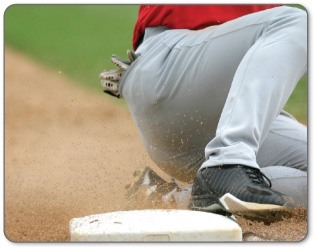 Anyone can injure their medial meniscus badly, though the medial meniscus is most often injured from sudden and traumatic accidents. This can happen from sudden stopping or sudden changes in direction with the leg - like when your foot is fixed / planted on the ground and a twisting force is applied to your knee. It can also get injured with a combination of excessive straightening or bending of the knee which is what happens in a forceful jump or landing. This includes athletes who participate in sports like volleyball, football, soccer, basketball, hockey and racquet sports such as squash and tennis. An incorrect slide into a base during a baseball game could may cause this as well. Young athletes are more likely to suffer a medial meniscus tear combined with a medial collateral ligament (MCL) injury. When the medial meniscus tissue is stressed and pulled, a 'bucket-handle' tear might happen. The most common location for injury is to the posterior horn of the medial meniscus, and longitudinal tears are the most common type of tear that happens.  Everyone can be affected by degeneration of their medial meniscus over time. As we age, our tissue ages too; over time, meniscus tissue starts to deteriorate, becoming thin and more likely to break down. Repetitive or frequent movements can place stress on the medial meniscus over the years, increasing the risk of an eventual tear. The knee joint itself suffers degenerative changes such as arthritis, osteoarthritis and/or cartilage thinning on the ends of the bones. This gradual wear and tear on the knees comes from overuse, repetitive knee movements, twisting or prolonged weight bearing activities. Degenerative changes to the knee happen slowly, so you may suffer a torn medial meniscus from a simple daily activity. You need to be aware that this injury can happen to anyone and is not just isolated to athletes! Types of Medial Meniscus TearsMedial meniscal tears are classified and treated based on their location within the knee, tear pattern, complexity of the tear, and quality of the tissue. There are a number of classifications for tears to the meniscus. The most common type of medial meniscus tear is the bucket handle tear. This is because the meniscus is anchored in 3 places (anterior horn, posterior horn and lateral by the MCL). When the knee is twisted and force is placed on the meniscal tissue, the meniscus splits in the middle. This creates a longitudinal tear that looks like a bucket-handle anywhere on the meniscus surface. Bucket-handle tears are displaced vertical longitudinal tears and usually involve the medial meniscus. The separated inner tissue resembles the handle of a bucket. The remaining larger outside portion of the meniscus resembles the bucket. These tears account for about 10% of all meniscal tears. (reference: 1) Click here for more information about the different kinds of meniscus tears. In most cases, mild to moderate tears in the Red or Red-White zones of the medial meniscus can be treated through conservative treatments. In cases where the medial meniscus has torn into the White zone or there is a displaced flap of meniscus that catches / locks your knee, surgery will be needed to repair or remove the torn piece of medial meniscus. Symptoms of a Medial Meniscus Tear If you've suffered a traumatic sudden injury to your knee while playing sports, swelling on the inner (medial) side of your knee will happen within a few hours after the injury or in the following days. You may also experience more intense pain when bending, walking, or twisting your knee. You'll continue to feel some tenderness on the inner part of your knee. If your medial meniscus tear is severe enough you might feel a 'giving-way' sensation (instability) in your knee. This feeling may be combined with locking, catching or clicking in your knee. There is usually pain with weight bearing activity such as climbing stairs and twisting movements of the knee when kneeling or squatting. 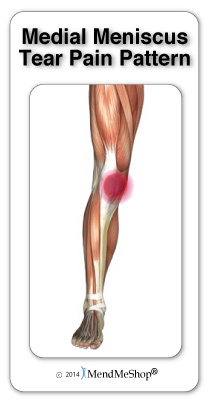 Degenerative medial meniscus tears are subtle with pain that increases over time. You may also notice swelling after exercise or daily activities. If you do have pain, you'll experience pain on the inner side of your knee and possibly feel weakness / instability in your knee with locking, catching or clicking. Pain may increase with certain activities, like climbing a set of stairs, kneeling to do the simplest thing as putting away your groceries or squatting to pick up something you may have dropped. If you're suffering for a chronic medial meniscus injury you may have developed a limp due to severe pain or you're unable to stand for long periods of time. A chronic injury could also result in 'buckling' of your knee when weight is placed on it and loss of range of motion. You might be suffering from a medial meniscus tear if:
If you are experiencing one or more of those symptoms or you're suffering from on-going pain on the inner part of your knee then you might have a medial meniscus tear injury or possibly a lateral meniscus tear as is can often be difficult to distinguish based on symptoms. Location, shape and size of your tear can greatly influence your success in healing your medial meniscal tear. Know that ACL tears are also common causes of knee joint instability. You will also find that there are some diseases and chronic conditions (arthritis, lyme disease) that are symptomatically similar to meniscus tears. As always, we definitely advise getting yourself to a physician for a proper diagnosis to determine the true cause of your symptoms as you really need to know what the underlying problem is before you can treat it. How Is A Medial Meniscus Tear Diagnosed?The best way to diagnose this condition is with a quick visit to the your doctor for a physical examination of your knee. There are many conditions other than meniscus injuries that can cause knee pain such as an ACL tear, patellar or quadriceps tendinitis, a fracture, arthritis or knee bursitis. Getting a proper diagnosis is important so you can treat your condition correctly.  Your doctor will gather a medical history about you, and likely consider previous knee injuries or joint stiffness that you may have had in the past. This will help the doctor to determine if you have a more complex injury in your knee and rule out any other knee injuries that may be present. A set of range of motion tests will be undertaken by the doctor that may or may not include the McMurray's Test, Joint Line Tenderness Test, Ege's test, Apley Grind test and Thessaly test. Your knee might hurt from the doctor poking and prodding at it, but by doing this the doctor will know for sure the source of your pain, the level of tenderness in and around your knee and how well your knee can move with this condition.  Your doctor may suggest diagnostic imaging to obtain more detailed information, and assess the amount and/or type of damage done to your knee and meniscus. There are a variety of different tests available to help them analyze the situation; and the recommendation will be dependent on your injury. X-rays will provide an image of the overall bone structure of your knee. It's helpful in identifying abnormal bone shapes, fractures, arthritis, or loose bones and bone abnormalities that may mimic a torn meniscus. Other tests like a bone scan, MRI (magnetic resonance imaging) or blood tests may be done if an x-ray looks normal or the doctor is unsure whether you have a fracture. These tests will also rule out any infections of the bone or tissue and help to determine if you are suffering from other injuries like arthritis or osteoarthritis (degenerative damage). If you are experiencing a build up of fluid in the knee, your doctor may aspirate (use a needle) to remove fluid from the joint to check for bacterial infection. Your doctor will be able to determine whether there is an infection or not by drawing a small sample of the synovial fluid with a needle. If it is determined that there is an infection, you will be prescribed antibiotics to get rid of the infection and the physician may pursue deeper inspections into determining the source o infection. If you suspect you may have a medial meniscus tear injury..
Are You Sure You Really Have A Torn Medial Meniscus?Sudden force to the outside or inside of the leg - or sudden twisting of the leg (most common in sports such as football or skiing) can cause a number of types of inner knee injuries. 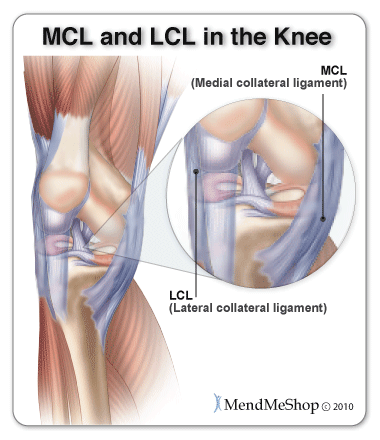 MCL TearMCL = Medial Collateral LigamentThe MCL is the ligament holding the medial meniscus and the tibia and femur bones together. The MCL is typically torn due to a direct blow to the outside aspect of the knee. It is common to suffer both MCL tear and a meniscus tear at the same time. Medial Cartilage TearBoth the tibia and femur bones have cartilage attached at the ends where they meet. The medial meniscus is a "C" shaped pad that lies between them. A traumatic event with impact to the knee or twisting can tear the protective cartilage on any one of the knee bones; as you may expect, the medial meniscus can be damaged in such an incident as well. Goosefoot (Pes Anserine) BursitisPes anserine bursitis is a painful, inflammatory condition affecting the tendons between your shinbone and the hamstring tendons at the inside of your knee. The pes anserinus is the area where the tendons of 3 muscles (sartorius, gracilis, and semitendinosus) come together. The three tendons merge together in the skin of the bone on the inside surface of the shinbone. These three muscles are the dominant knee flexors; they influence the rotation of the tibia and protect the knee against rotary stress. Pes Anserine TendonitisInflammation of the pes anserine bursae or tendons usually develops due to overuse, trauma, or degradation. The most common cause of pes anserine bursitis is hamstring tightness due to a lack of warming up and stretching properly before activity, particularly long distance running or excessive climbing. You may notice swelling in front and/or underneath the kneecap as well as often warmth and tenderness when touched. Onset of this condition is typically gradual rather than stemming from a specific traumatic event. 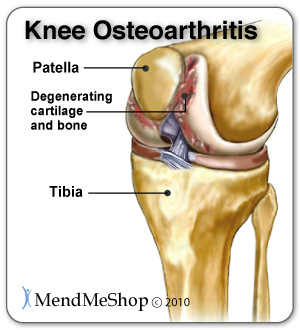 Arthritis / OsteoarthritisDegeneration to the cartilage on the ends bones in your knees can become torn or wear down and is typical in cases of knee osteoarthritis. This can cause knee pain, locking, swelling, weakness in the knee and range of motion difficulties. Calcified MeniscusThis condition has been directly linked to end-stages of Osteoarthritis and the degeneration of the meniscus. As the disease progresses calcium crystals are deposited into the meniscus tissue and into the fluid of the knee joint. Increasing inflammation levels, swelling, tenderness, stiffness and loss of range of motion in the knee and leg. (source: Arthritis Research ) Osteochondritis DissecansThis is one of the less common causes of knee pain. A reduced blood supply to parts of the bone cause loose fragments of cartilage and bone to break off. This disease can occur in any joint, it is the knee that is the most commonly affected. This can cause pain, locking and clunking sensations in the knee, limited movement and swelling. 'Over Compensation Pain' Is A Big Problem With Meniscus Injuries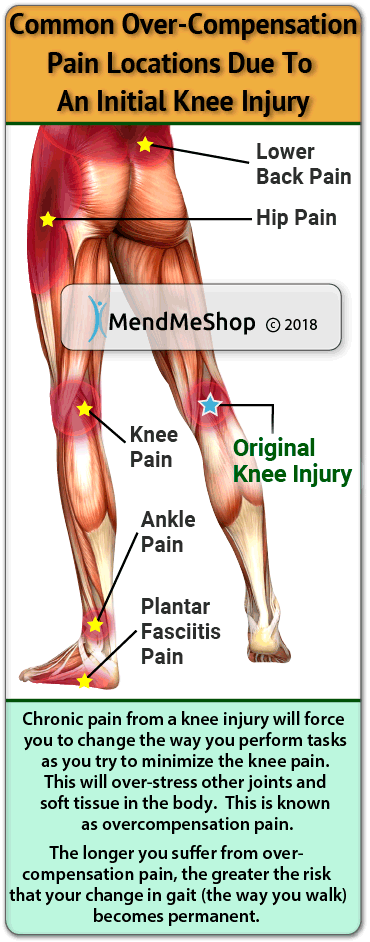 Since you are reading this, you probably know that serious knee injuries do not just disappear. Over time, it will wreak havoc on your knees, hips, ankles and lower back due to lack of movement, over-compensation and a change in gait. It will also wreak havoc on your opposite knee, due to the fact that you will be overusing it to compensate for not using the bad knee. Recovery takes a longer time for such chronic (long term) injuries, but proper healing is essential to regain strength and get you back to the activities you enjoy. Everything in the human body is connected. Any meniscus injury can lead to other injuries over time if not treated properly. You WILL subconsciously start shifting more of your weight onto your opposite leg when performing normal daily activities, like climbing the stairs or when standing for long periods of time. You may also try to limp using your opposite (healthy / stronger) leg to get back to work, activities or your sports sooner to avoid waiting for your medial meniscus injury to heal completely. Many of our clients have experienced pain in their opposite foot, ankle, knee and hip because they shift their standing weight to the opposite side of their body. For example, you might normally climb stairs by leading with your injured knee, but instead will lead with your opposite leg and hop or shuffle more than walk the stairs. Even though changing something like this seems like a really small thing, changing the way you would normally climb a set of stairs when your body isn't used to that can result in pain and injuries in your healthy knee and leg. The longer your injury endures, the greater the risk of running into serious overcompensation injuries and a permanent change in gait.Over time you'll notice that you automatically start to put more weight on your non-injured side to cope with everyday activities. When you experience pain in other areas of the body due to minimizing the pain from an older injury, this is something called "over compensation" pain. Usually degenerative medial meniscus pain will happen to your dominant knee (if you are right handed, this would be your right knee). When this happens there is a higher risk that you'll over-strain your weaker knee that's compensating for your injury, because it's just not as strong as your dominant side. Circulation Boost (Circulatory Boost) is the best treatment available to deal with over compensation issues and injury prevention by maintaining healthy blood flow in around your injured meniscus AND in your healthy knee as well. If you are also experiencing overcompensation pain in the hips, we recommend the use of a BACK/HIP TShellz Wrap® Even if you try to avoid over compensation pain in your healthy knee, you're still at risk for re-injuring your damaged meniscus. Ignoring over compensation pain and the pain felt from your meniscus injury while returning to regular activities or your job can and usually will lead to even more problems with healing. To Stop A Worsening Meniscus Tear & Reduce the Risk of a More Serious Overcompensation Injury, You Need to Heal Quickly & Completely!Time is no friend to an immobilized joint - you lose strength in your knee but worse than that, you lose the range of motion from atrophy (your flexible tendons, muscles and ligaments slowly shrink / waste away, decreasing joint elasticity). The more time that goes by with your knee immobilized, the more likely you'll wind up with a worsening meniscus tear or perhaps a secondary chronic (long term) problem stemming from reduced range of motion and/or immobility. Basically it means that your knee won't perform as well as it once did and becomes more prone to injury again later on. If you have a torn meniscus in your knee, it's very important to heal it quickly and completely. Minimizing the healing time of your medial meniscus should be an obvious goal, as meniscus tears will no doubt limit your ability to go about your daily routine; but also keep in mind that untreated meniscus tears will typically get worse over time. As stated here (pennmedicine.org), "If not treated, part of the meniscus may come loose and slip into the joint. You may need surgery to restore full knee function. Untreated meniscus tears can increase in size and lead to complications, such as arthritis." Dealing with a continuously worsening meniscus tear, chronic inflammation / swelling, loss of range of motion and an increasing risk of overcompensation injuries mean you'll have a greater chance of winding up with a chronic knee condition or a serious case that needs to be resolved with surgery. This is why it's so important to continuously use conservative treatment tools to treat and heal recurring soft tissue damage before it builds into something bigger. For anyone that is suffering from a torn meniscus, having the right tools makes all the difference. Scar TissueDuring the healing process your body fills in soft tissue tears with brittle tissue called "scar tissue". Scar tissue also grows once you've had surgery to repair your meniscus. The human body uses scar tissue as a temporary binding solution and will try to build the scar tissue as fast as possible around damaged soft tissue. The scar tissue that forms in the knee will be unorganized and won't line up properly with the healthy tissue surrounding your meniscus. This scar tissue will also attach to everything around your meniscus (including the ACL, PCL, MCL and LCL ligaments). This can result in a long-term fusing together of your tissue that stiffens up your entire knee, reducing your mobility and making your meniscus injury even more painful!
Scar tissue can become extremely problematic over time, as you have to understand that scar tissue growth can persist and accumulate quite easily. There is a condition known as "arthrofibrosis" - also known as "stiff knee syndrome". Arthrofibrosis occurs when scar tissue has built up inside the knee, causing the knee joint to shrink and tighten. As scar tissue limits joint range of motion, it is not uncommon that the patient eventually exceeds the ROM limits, causing strains/pulls and encouraging the growth of even more scar tissue. This is one of the major reasons why physical therapy is such a crucial component in the rehabilitation process - through many various methods, a physical therapist is fighting to reduce, break up and get rid of your scar tissue. It is often a painful yet necessary process. Continuous re-injury and build-up of scar tissue while staying active means you'll have a greater chance of winding up with on-going pain, and more tearing or weakening (atrophy) of soft tissue in the knee (ligaments, tendons, muscle). If you have pain and inflammation in your knee, it's very important to heal your injury quickly and completely. You must avoid the build up of scar tissue. If you don't, your meniscus tear may start you on the path of a downward spiral that could result in something much worse such as permanent loss of range of motion or osteoarthritis. This is why it's so important to continuously use conservative treatment tools to deal with your meniscal damage before it can build into something big. For any medial meniscus tear sufferer, having the right tools means all the difference. Scar tissue is something that needs to be dealt with fast. If you try to get back into your regular daily activities after surgery with a mound of scar tissue in your joint you'll have a higher risk of re-injury. Scar tissue is just not built to withstand the pressures of regular activity. If you have scar tissue in the knee and re-injure your knee, even more scar tissue will grow to fill in those tears. If you keep falling into the dangerous cycle of re-injuring your knee without proper treatment you could end up with massive amounts of scar tissue in your joint. Your ability to move your affected joint in a normal way will be impaired as the amount of scar tissue increases. The truly get on the path toward repairing your meniscus injury through conservative treatment methods
Anti-Inflammatory Medications for Meniscus TearsNSAIDs, non-steroidal anti-inflammatory drugs, can be used if required to help manage your pain. However, these aren't recommended for long term use, as they can cause gastrointestinal difficulties and increase the risk of cardiovascular disease. The TShellz Wrap®, when used in conjunction with NSAIDs can greatly improve the effect of the medication; this can not only help you heal quickly but also reduce the amount of NSAIDs that you ultimately may require. Meniscus SurgeryDepending on a variety of factors, your surgeon may recommend surgery on your meniscus tear. Usually this is done via arthroscopy, which is a surgical procedure where tiny incisions are made and a pencil-sized camera is inserted into the knee. The surgeon will then look for damage to the meniscus and make repairs if possible. This is also done to remove fragments, bone spurs, meniscus flaps or portions of the meniscus or the complete meniscus. Recovery time for the surgery will depend on a number of different factors including your healing ability, diet, rest and how many procedures were done in your surgery. Post-op recovery time can be reduced with the use of Cold Compress or Ice Pack and a TShellz Wrap® following surgery. Cold compression is recommended by doctors after surgery to treat your pain in a natural, non-addictive way and to reduce swelling. Once the incision has healed, speak with your doctor about the use of a TShellz Wrap®. The TShellz Wrap® encourages more oxygen and nutrients to flow to the area to speed healing and improve the strength of the soft tissue in your knee. Using the TShellz Wrap® following your surgery (after inflammation is down and the surgical wound has healed) will help prevent and minimize the scar tissue that forms as you heal. Treating scar tissue is the most important step following surgery, especially in a joint, to help improve the range of motion in the knee. Leaving the scar tissue untreated can lead to stiffness, chronic knee pain, osteoarthritis or other chronic conditions. Read more about Meniscus Surgery here. If you have undergone surgery, we highly recommend you go to our Meniscus Post-Surgery page and learn more about post-surgery rehab.To Start Recovery, Healing Time must be Minimized with Effective Treatment OptionsBefore we go further, it's important to understand that your body is capable of healing itself - though it requires the flow of blood to do so. When it comes to meniscus injuries, the inner third of the meniscus (known as "the white zone") really gets little to no blood flow and if you have a meniscus tear in this area, your physician will probably recommend surgery to fix it. This is one of many reasons why you need to see a doctor - only they will know if the tear is "surgically necessary" (SN). A physician will always try to opt for the conservative treatment first - usually, it works although it takes time to heal. If your meniscus tear is outside the white zone, then, with good blood flow in the area, the damaged fibrocartilage will receive oxygen and much needed nutrients while flushing away toxins and waste - otherwise known as healing. Inflammation and reduced movement (lack of activity or on-going immobility) reduces the flow of blood to an area that's already receiving very little blood flow which is why it is important to keep it down. If you are still active with a meniscus tear, you run a risk of increasing the severity of the injury; if there has been some healing, you could re-injure your meniscus all over again and/or easily make it worse. Blood Flow - the natural healing process in your body - needs assistance for medial meniscus injuries because blood flow is greatly reduced when you're injured. When treating a medial meniscus injury or really any type of meniscus or knee injury (ie. lateral meniscus tear, bucket-handle tear, posterior horn tear, or anterior horn tear), you need to increase blood flow to your injury while your knee is healing. This increase in blood flow will accelerate your body's own ability to heal itself. We believe the Knee TShellz Wrap® is to be a highly effective blood flow stimulation device for the knee that is registered with the FDA and available for home use. If you have a medial meniscus injury, it's very important to heal it quickly and completely. Minimizing the healing time should be an obvious goal, as a chronic medial meniscus tear will limit your ability to go about your daily routine for a long period of time. A seemingly small, nagging injury in your meniscus that's not properly treated can lead to a chronic painful degenerative medial meniscus tear that can persist for years if not properly treated. Torn Medial Meniscus Home Remedies |
 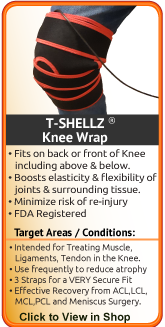  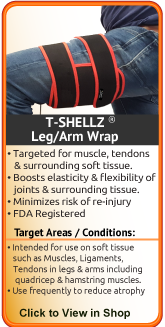    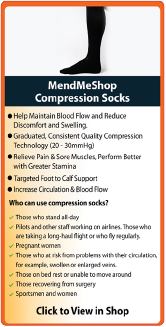 |

